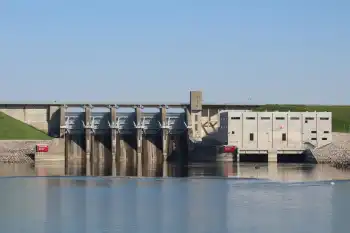TTC rockets toward green
By Toronto Star
Substation Relay Protection Training
Our customized live online or in‑person group training can be delivered to your staff at your location.

- Live Online
- 12 hours Instructor-led
- Group Training Available
The commission's proposed environmental plan would make the TTC the greenest transit system in North America by 2020.
Moving toward greener buildings, fuel and vehicles will come at a price, but the investment will pay off in a cleaner city and lower operating costs, said TTC chair Adam Giambrone.
"It's something Torontonians expect. They've been asking for the city to meet commitments to reduce our environmental footprint. This plan does that."
Parts of the TTC proposal are more ambitious than the city's own environmental plan. "The city is thinking about green procurement – we are doing green procurement. We are matching them on alternative energy sources, we are meeting their green fleet plan," Giambrone said.
Although it's being outdone in some areas – Calgary leads on using green energy for its light rail system, and New York has a solar-powered station at Coney Island – the TTC's green plan is ambitious, according to Giambrone.
"We checked with other transit systems. We will exceed by far any other standard in North America. There is nobody that is doing all these things," he said.
The full cost of initiatives such as green roofs and more energy-efficient buildings won't be known until designs are done. In June, the commission approved a green roof (covered in plants for cooling) for the Victoria Park station redevelopment, and a cool roof (covered with a coating to reflect sunlight) as part of the Wilson car house addition.
"We build buildings for 50 to 100 years. If it's going to cost 4 to 5 per cent more at the outset, it's an investment," Giambrone said.
Some of the plan is already in place.
The bus fleet, for example, already includes 150 hybrid buses operating on biodiesel. Hybrid buses cost about $750,000 compared with $500,000 for a diesel bus, but federal grants cover the difference.
As the city's second-biggest energy consumer, the TTC's move toward using 25 per cent green energy by 2012 will add between $1.6 million and $2.6 million a year to its $45 million annual hydro bill.
That money would be factored in to the commission's capital plans.
Some initiatives, such as the procurement plan, are a matter of policy, but they're more difficult than they sound.
"(The green procurement plan) requires us to look at each and every product we buy, figure out how to source it from an environmentally sustainable and friendly perspective, also figure out how you're going to get rid of and recycle this product at the end of its lifespan," Giambrone said.
"Torontonians should be proud of the TTC," said Franz Hartmann, executive director of the Toronto Environmental Alliance.
But the province's failure to increase the TTC's operating subsidy and Ottawa's refusal to commit to Toronto transit projects is disappointing, he said.
"The federal and provincial government are doing nothing to help green Toronto," Hartmann said.
TTC commissioners are expected to approve the plan.











